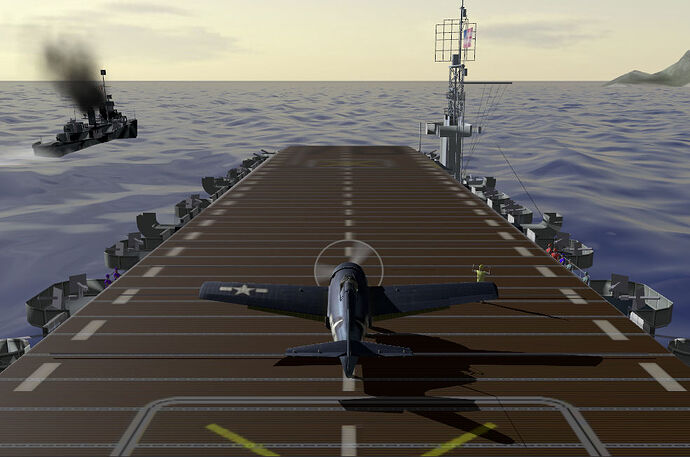UPDATE (23 Jan 2025)
The simulations have now been updated to r172.
To keep things interesting, I have decided to convert the FM2 flight simulation into a combat simulation. This is how I am setting the scene:
While attempting to rejoin their task force, the carrier “Savo Island” and it’s destroyer escort have run across an uncharted island (possibly a newly formed volcano) on which the Japanese have established an air base. While small, this base poses a direct threat to trade routes in the Pacific. Consequently, we have been ordered to “take it out”.
Resistance on the island has been greater than expected. Instead of unskilled rookie pilots, the Japanese planes are manned by a squadron of highly skilled pilots (perhaps originally on R&R) who are willing to fight to the death and have, so far, rebuffed our efforts.
So the island is now a Japanese-held island. So far, I have:
- Created Japanese anti-aircraft guns (with blue-green tracers) and flak explosions with sound.
- Added the Fletcher destroyer to our group of ships
Once the Fletcher clears the nearby island, it will start shelling the Japanese base, setting one of the hangars on fire. So I need to create fire trails and modify the volcano smoke.
I also plan to populate the carrier with ship crew with limited animations.
Then it is back to Blender to update my Japanese Zero into a slightly animated opponent aircraft. Later, I can convert the Zero into a fully-animated flyable airplane and give you the option of defending the island.
As I “lock down” these special effects (e.g., AA guns, animated flags, ship wakes, smoke, black out/red out), I can transfer them into a separate module to reduce the size of the main program and make them more easily accessible to programmers who want to create their own combat simulations.
Hopefully, this will be a fun exercise for all.



